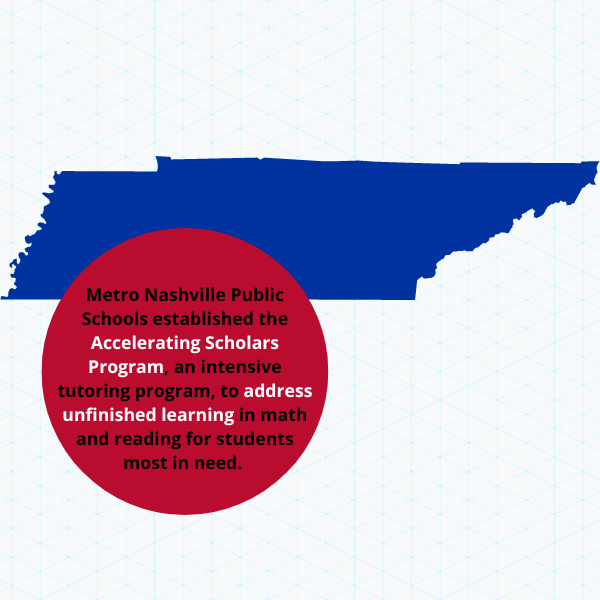Similar to students in many U.S. school districts, Metro Nashville Public Schools (MNPS) students experienced unfinished learning as a result of the pandemic. This was particularly prominent in elementary school reading and middle school math, where the pandemic worsened existing inequities. Enter the Accelerating Scholars Program.
In its first year, this targeted, intensive tutoring program served more than 4,000 students. MNPS originally had an ambitious goal of serving 7,000 students, but district leaders scaled back in the first year to maintain quality. Students in the Accelerating Scholars Program receive tutoring three times per week for at least 30 minutes at a time, always with the same tutor, and with no more than three students. All of the tutors, whether full-time educators or volunteers, are trained in tutoring best practices. Curriculum is on grade level, not remedial, because district leaders believe that this is essential to accelerating learning.
To ensure that the Accelerating Scholars Program is effective and prioritizes students most impacted by the pandemic, the district created an equity matrix using academic data. Nashville prioritized schools and students based on academic need (e.g., students who scored below the 60th percentile on Measures of Academic Progress (MAP) assessment) and readiness to host tutoring based on a school’s infrastructure. The program collects weekly survey data from tutors and students, social emotional learning data, and MAP data to measure success.
This practice was featured by The Education Trust in Promising Practices: A School District Guide to Advocating for Equity in American Rescue Plan Spending.

